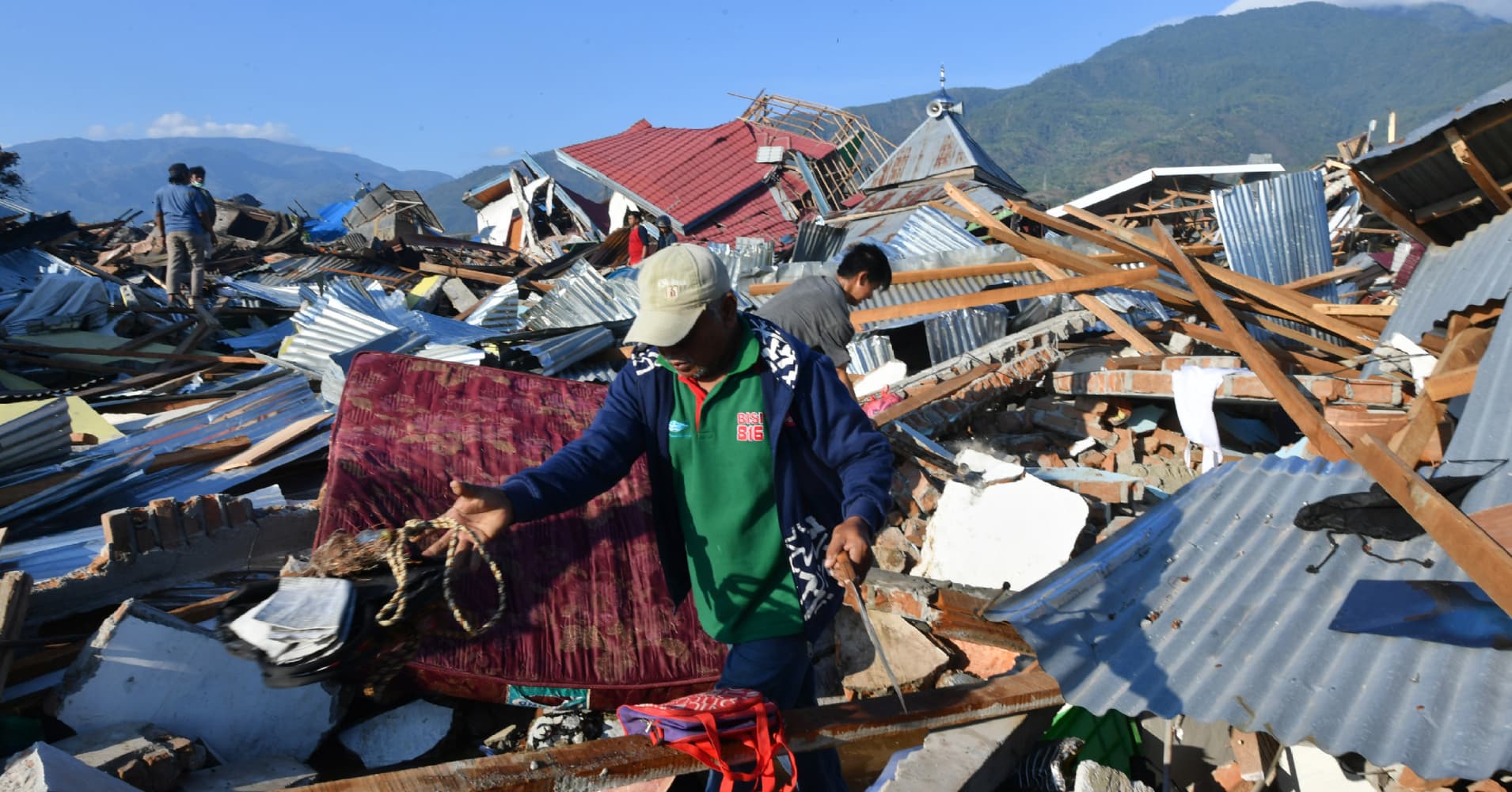
A lack of funding from currency devaluation prevented the installation of a new tsunami detection system in Indonesia before Friday's devastating earthquake, one of the researchers involved in the project told CNBC.
A 7.4 magnitude earthquakestruck Central Sulawesi province on Friday, unleashing six-meter high tsunami waves in the city of Palu and the neighboring town of Donggala. More than 832 people died, with the death toll expected to rise and many others believed to be affected by rubble and landslides.
Before the disaster, a team of U.S. and Indonesian institutions was working on a prototype that could provide officials with extra minutes of warning time than most tsunami detection programs. That could be vital in saving lives.
The program uses sensor nodes and cables to recognize changes underwater and transmits that information to the Indonesian Agency for Meteorology, Climatology and Geophysics, or BMKG, said Louise Comfort, who is part of the initiative.
"This type of data is really important in determining tsunamis," said Comfort, a professor and director of the Center for Disaster Management at the University of Pittsburgh.
Early detection can be critical to dealing with natural disasters, especially for a country like Indonesia. Southeast Asia's largest economy sits on the Ring of Fire, a belt of sites around the Pacific Ocean where many earthquakes and volcanic eruptions occur.
In 2004, a 9.3 magnitude undersea earthquake triggered a massive tsunami off the coast of Sumatra that killed 220,000 people in countries around the Indian Ocean. A series of powerful earthquakes hit the Indonesian island of Lombok last month, killing hundreds.
Comfort's team received a grant for the venture in 2013 and successfully tested the system in 2016. But funding that was approved in late July to install the tsunami prototype "was not sufficient to cover the cost" due to recent devaluation of the Indonesian rupiah, Comfort explained.
Coordination was also another factor, she said: "There are three agencies that need to work together, plus our set of six institutions — four from the U.S., two from Indonesia — that need to put it in place."
Because of Indonesia's location, "tsunamis will come again and they will come in other cities," Comfort warned.
Hundreds of aftershocks continue to reverberate around Central Sulawesi, hindering rescue operations, according to humanitarian agencies.
"It is very bad, the biggest challenge is access," said Martin Faller, Asia-Pacific deputy director at the International Federation of Red Cross and Red Crescent Societies, which handles Red Cross organizations across the world. The Indonesia Red Cross was operating "very, very cautiously because this is a very, very dangerous environment," Faller continued.
"People are very frightened, they are not going into buildings, they stay on the streets because they are afraid there could be more heavy shocks," he said, noting the high risk that disaster relief teams were taking to access affected people.
Speaking from Palu over the weekend, Indonesian President Joko Widodo said heavy equipment, food, water and fuel supplies were on the way.
"The risk of epidemics is also a challenge," Faller warned. For now, the Red Cross and its volunteers are helping residents with immediate needs that include health, emergency first-aid as well as psycho-social assistance, Faller said.
Faller said that the Red Cross has released 1 million Swiss francs in aid and is currently appealing to the world for 20 million Swiss francs, a number he expects will rise as the death toll mounts.
No comments:
Post a Comment